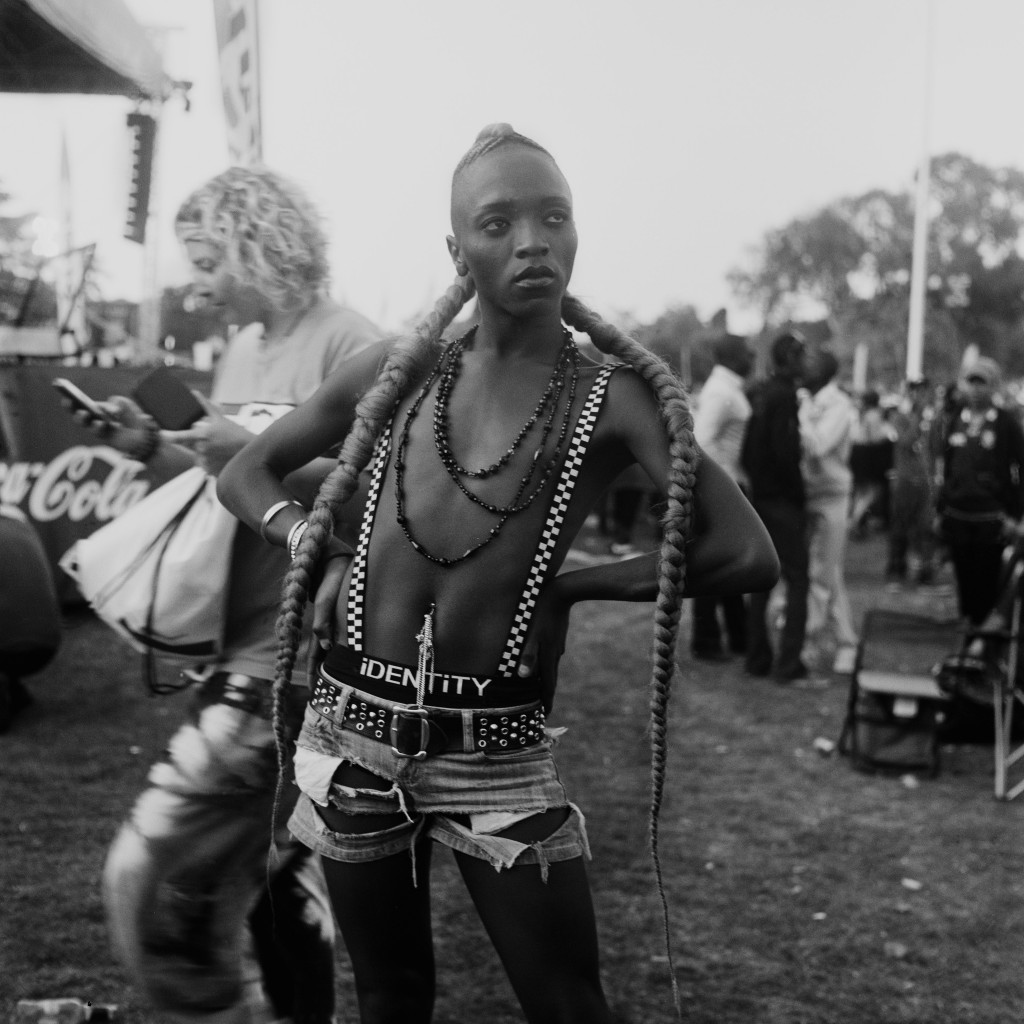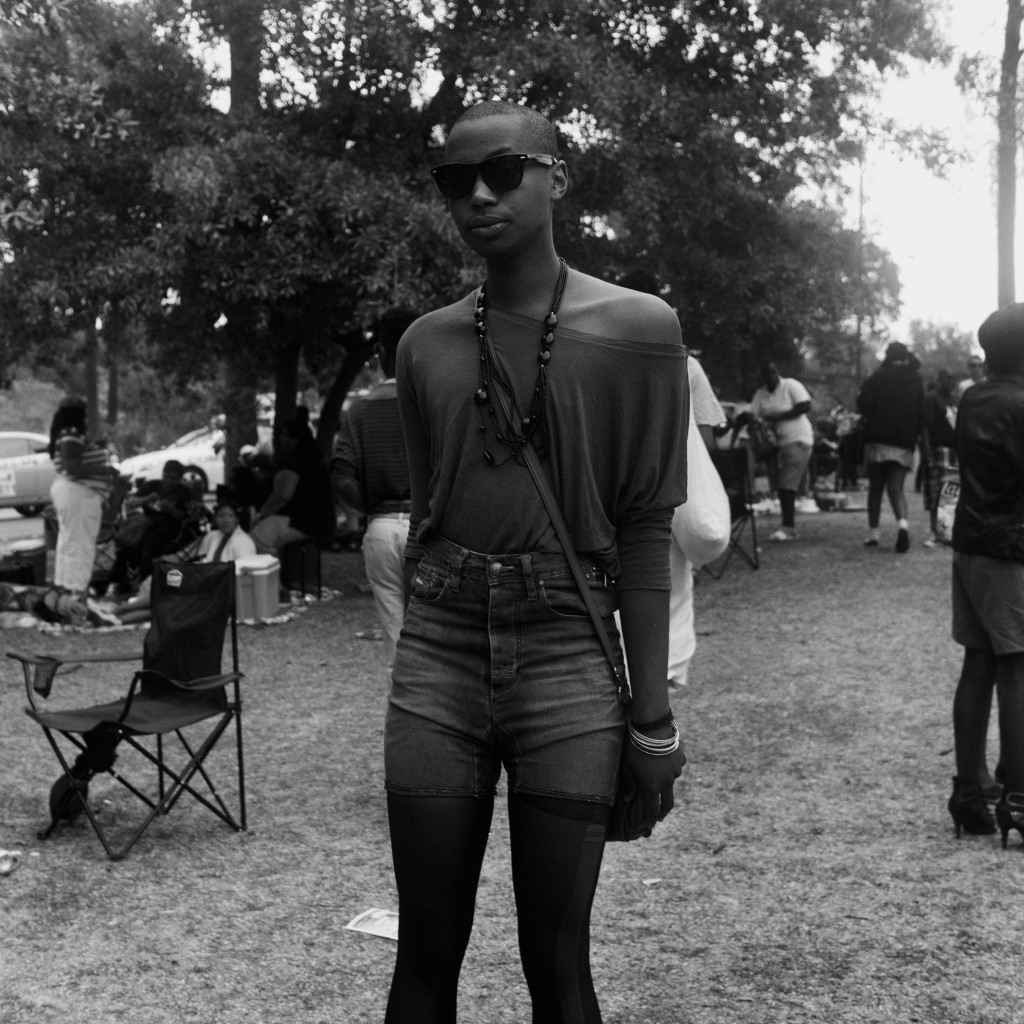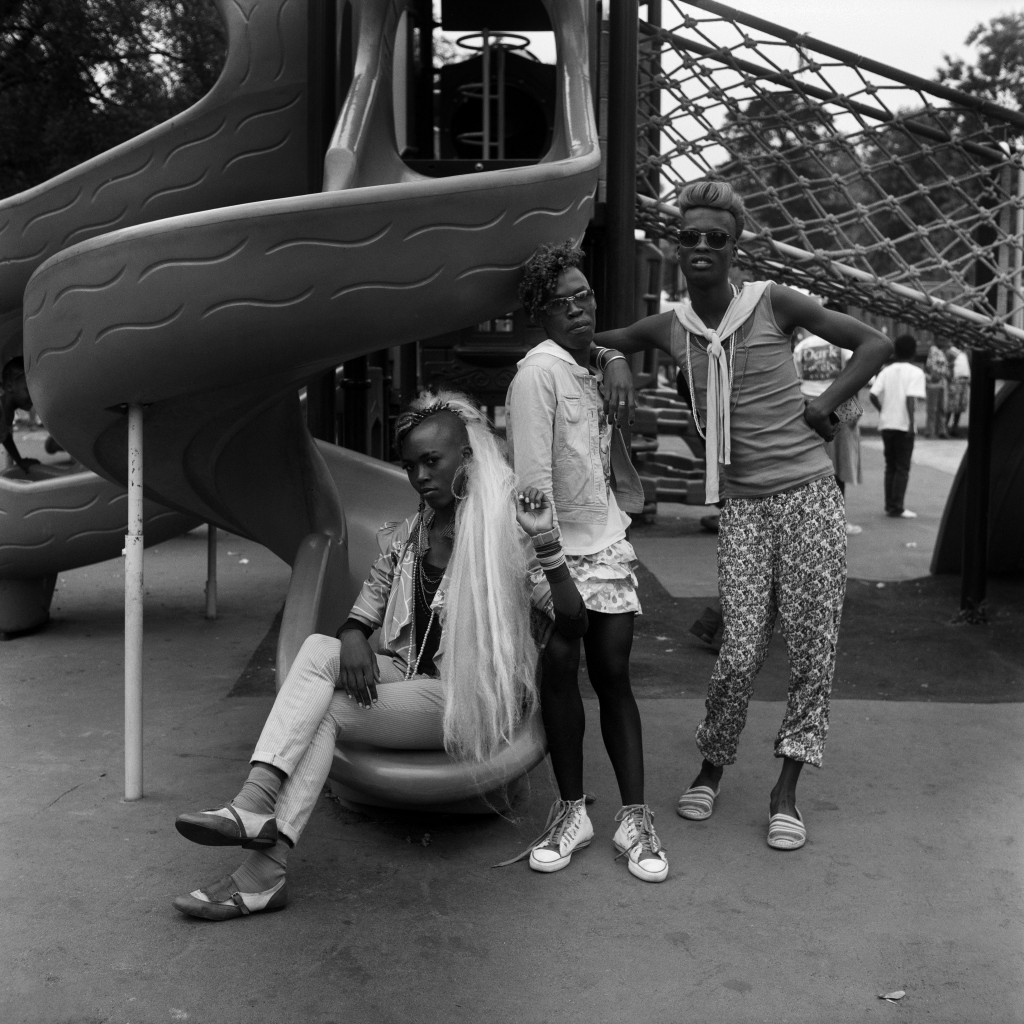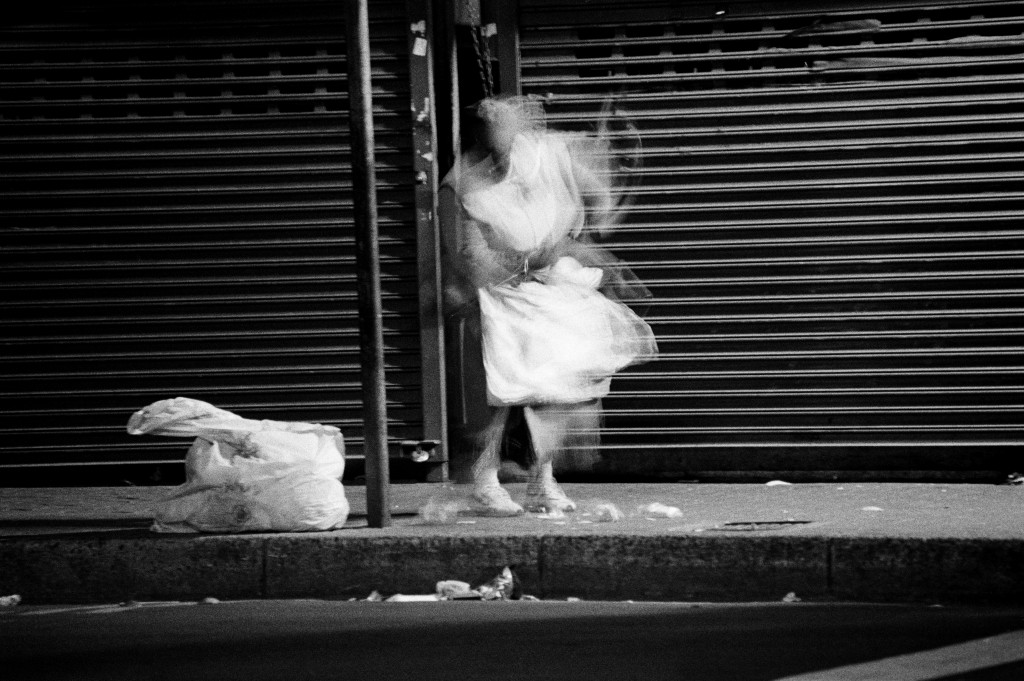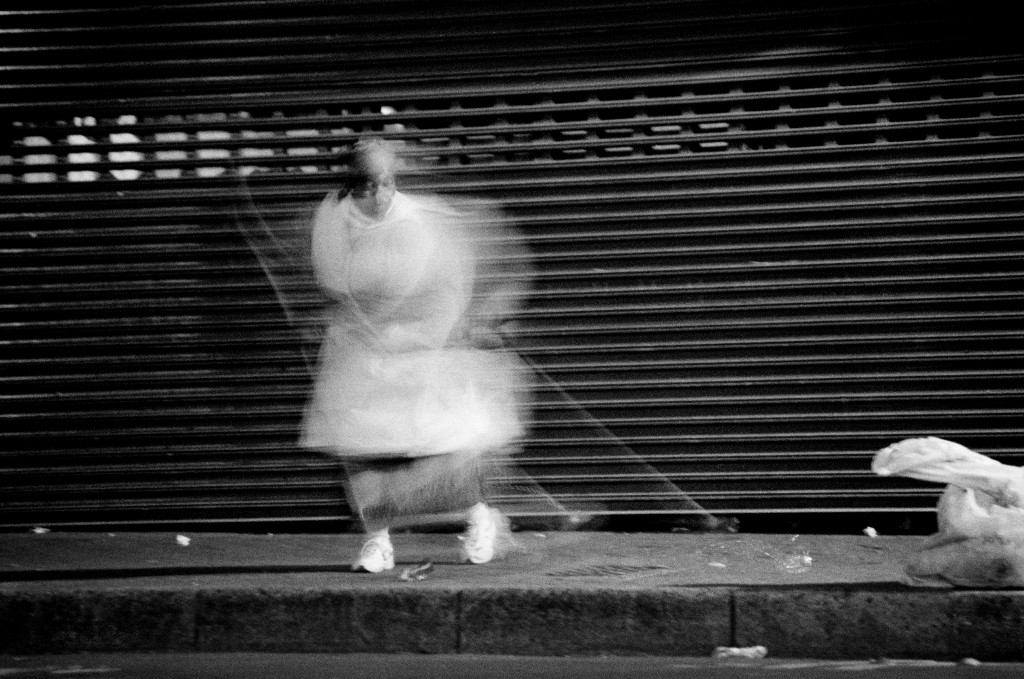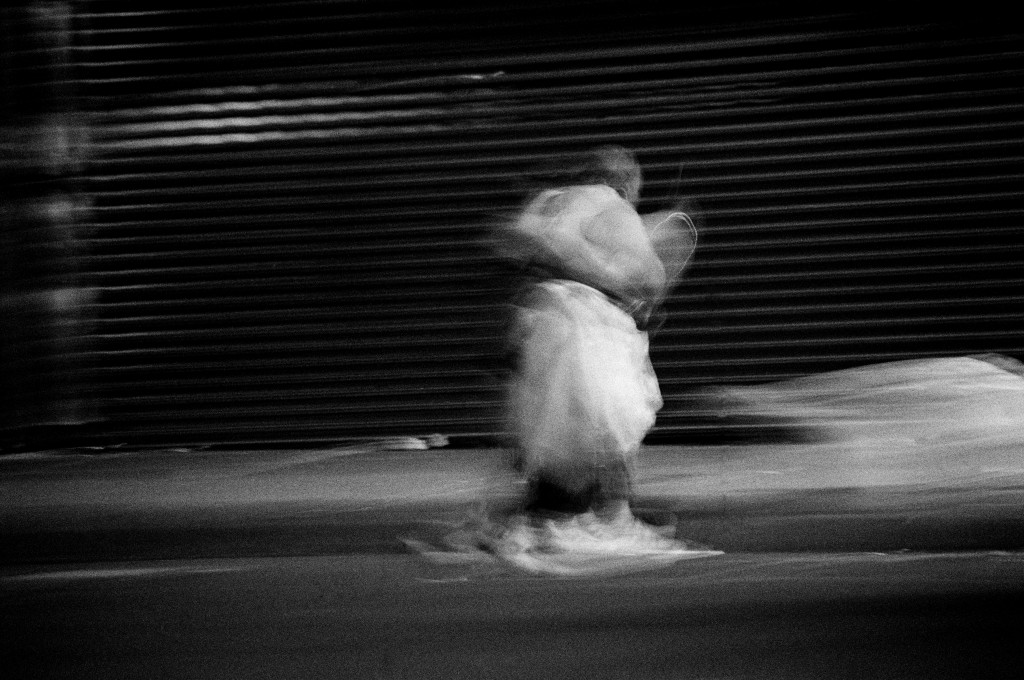‚My photographs don’t belong in a drawer’
African photography is on the rise. Following decades of photographic misrepresentation by observers from outside the continent, African photographers are now showing the world what they see through their lens. This is Africa spotlights them in a series of interviews.
Africa might be a colourful continent, through the eyes of Sabelo Mlangeni (1980) from South Africa it’s a world in black and white. It emphasises the essence of the subjects he photographs. With his images he reflects on his countries past, while at the same time looking forward into the future and how life has changed. ‚History forms an important part of my work’, he explains, ‚especially in my own country where it’s just two decades ago that Apartheid was abolished.’ Sabelo focusses on a lot of subjects that have not been portrayed in his country nor the whole African continent yet, leading the pack.
LGBTI
Take one of his latest series for example: ‚Black Men in Dress’, a series of portraits shot at the Johannesburg and Soweto Pride. ‚This yearly event is a celebration for the lesbian, gay, bisexual, transgender and interest (LGBTI) community. Most communities have what we call ‚uSis’bhuti’, a term used to describe a boy who behaves like a girl. We all grew up knowing this, but never acknowledged it. So I asked myself questions like: Why then do we hate these boys when they have grown up to be men who dress as women? Why do we turn and call them names, pretending that we’ve never seen it? These are some of the issues I try to bring to the foreground in this series.’
Unnatural
Sabelo came up with the idea for ‚Black Men in Dress’ while shooting his preceding series ‚Limbali’, about reed dances in KwaZulu-Natal and Swaziland. This being a traditional event where maidens bring reeds to rebuild the queens mother’s home and pay allegiance to her, it’s a rite of passage that forges commonality in a community. Although it’s perhaps better known as the king’s opportunity to choose a new wife. ‚I travelled through Africa looking at how weddings and the associated ceremonies are celebrated and wanted to aim that at the LGBTI community. It’s part of our community and we should not deny it being so. We tend to act like these people don’t exist, but they’re everywhere around us. The same goes for cross dressing; we see it, but don’t know how to react to it because it’s unnatural to us. That’s very interesting to me, because it engages the viewer and confronts them with a part of Africa that’s usually under lit.’
Collaboration
Photography is the perfect medium for Sabelo to explore these subjects, with which he started in 2003 with his series ‚Country Girls’. He researched what goes around behind the scenes of a rural community, focussing on gay life. ‚Back then gay couples weren’t allowed to get married officially, but in small towns and rural areas it already happened. I decided to follow these events and tried to capture the progress in their situation. That’s why this project took several years.’ The people he portrayed were not used to photographers to stay for a longer time; they usually just come and go. But for Sabelo it turned into a collaborations that allowed his to spend more time with them in Mpumalanga. And they could open up to him, also because he grew up in Driefontein and therefore is an insider to their community. ‚It’s a matter of trust, especially with these kind of subjects. You need to create a relationship.’
Migration
Although the areas he shot the series are rough and poor, Sabelo manages to show the glamour present in the form of drag queens, hairstylists and beauty pageant contestants, who are still often perceived as un-African or un-Christian Afterwards He released a book about his work in 2010, besides another book called ‚Men Only’ and a catalogue containing his series ‚At Home’ and ‚Ghost Towns’. For the first he focussed on rural areas where the breadwinners have migrated away in search of work, leaving behind only the young and old. The lather concentrates on small towns that have been abandoned due to immigration towards the country’s urban areas. ‚The kind of photographs that I make doesn’t belong to a drawer, but should be seen by a wider audience that appreciates a diverse view. It’s not mainstream and I don’t want to lead the viewer, but give them a chance to interpret my images in their own way.’
Invisible
As a photographer Sabelo admits to create his own truth, but that goes for all his colleagues as well. He tries to find answers to the questions he asked himself through his images. He tries to inform his viewers about a certain theme or subject that in his perspective needs to reach a broader audience, something he felt strongly when shooting ‚Invisible Woman’ back in 2007. A series in which history is very much present: ‚it’s about the fact that African woman weren’t allowed into the city during Apartheid, so you didn’t see them. Now, these woman are the ones cleaning the streets at night and when we wake up in the morning their gone. Again their are invisible, but now their are actually there, just not when others are around. They’re ghosts and I want to get people to wonder who they are with my photography.’
It’s something Sabelo very much like to do abroad – especially in Europe – in the future and bring his African photography style to other countries and continents. ‚But my approach to people and situations will always be the same: with integrity.’
Read the original article on This is Africa




